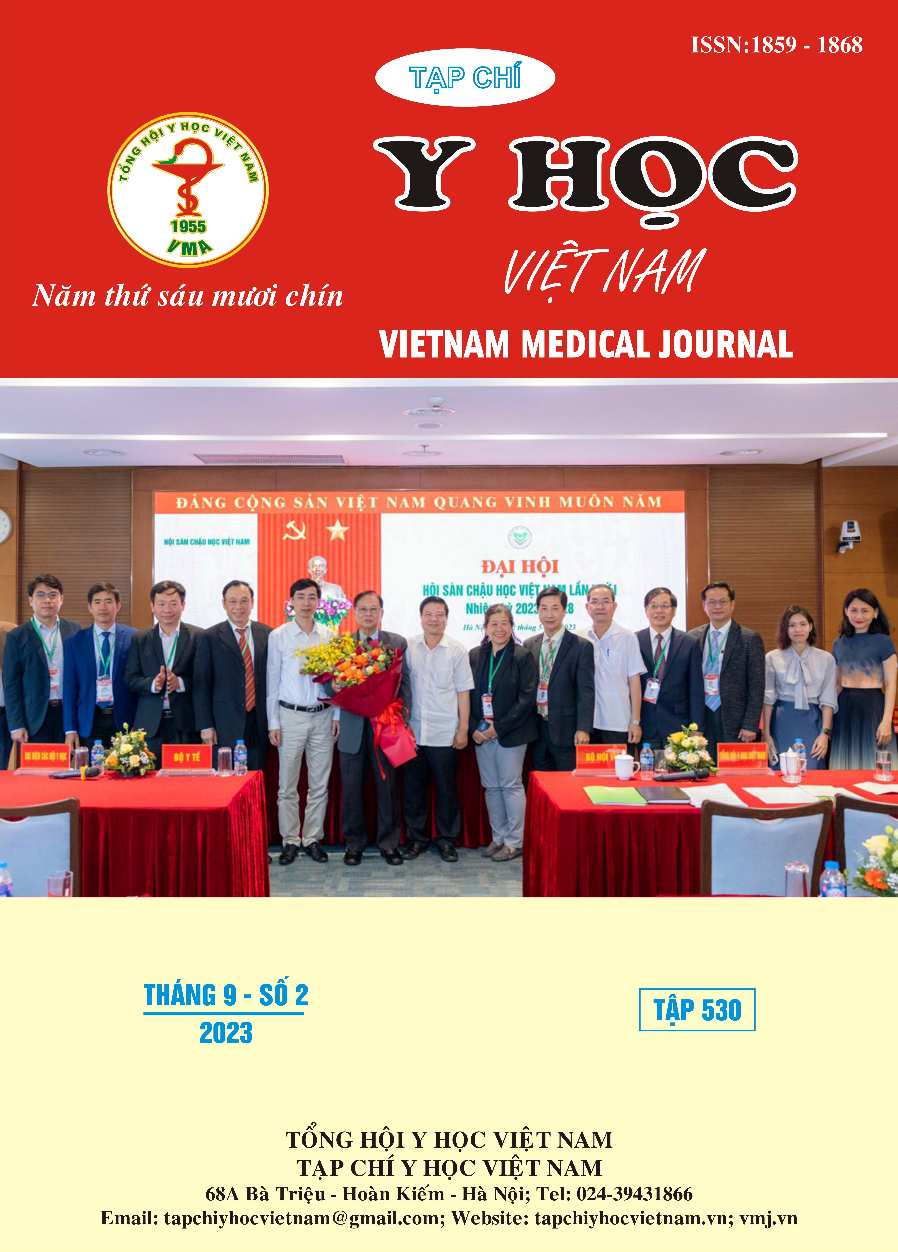THE RELATIONSHIP BETWEEN THE HIGH PLASMA HEMOCYSTEIN AND THE RISK OF DEMENTIA
Main Article Content
Abstract
Background: Dementia is a common syndrome in the elderly, affecting quality life of patients and family caregivers. High level of blood homocysteine and anemia are considered factors that can be used to assess of neurodegenerative diseases. We therefore want to research in Vietnam to find the relevance of these risk factors for Alzheimer's disease in Vietnamese elderly (>60 years old). Objectives: To compare the differences in level of blood homocysteine and lipid indices between people with dementia and those non-dementia, then to measure their association with dementia. Method: A case-control study was conducted on the subjects who are diagnosed dementia at the Memory Dementia Unit in 30/4 Hospital, Ho Chi Minh city. Results: There was a significant difference in blood homocysteine index between the two groups of dementia and those without dementia. In the group of patients with dementia, the median homocysteine concentration was 10.27 (8.32 – 13.44) µmol/l, in the control group was 8.59 (6.83 – 10.11) µmol/l. The average homocysteine concentrations in dementia and non-dementia groups were: 12.3 µmol/l and 8.50 µmol/l (p<0.001). There was a significant difference in blood lipid index between the two groups of dementia – the group without dementia. The median total cholesterol concentration in the dementia group was 5.35 mmol/l which was significantly higher than that in the control group by 4.74 mmol/l (p=0.026). The median LDL-cholesterol concentration in the dementia group was 2.94 mmol/l which was also higher than that in the control group by 2.48 mmol/l (p=0.012). This result shows that elevated total and LDL cholesterol levels affect the progression of dementia. Triglyceride and HDL-Cholesterol concentrations did not show statistically significant differences between the two groups of dementia and the control group. The median triglyceride concentration in the dementia group was 2.15 mmol/l higher than in the control group by 1.74 mmol/l (p=0.264). The median HDL-Cholesterol concentration in the dementia group was 1.32 mmol/l higher than that in the control group by 1.39 mmol/l (p=0.098). Patients with total cholesterol index >5.2 mmol/l had 2.35 times higher odds of dementia than patients with total cholesterol index ≤5.2 mmol/l (95% confidence interval 1). ,90 - 5.67), patients with LDL-cholesterol index >3.4 mmol/l had 3.04 times higher odds of dementia than patients with LDL-cholesterol ≤3 ,4 mmol/l (95% CI 1.47 - 4.82) and patients with homocysteine index >8 µmol/ml had 1.41 times higher disease odds than when homocysteine was in normal index. (95% CI 1.02 – 1.54). Conclusion: There is a statistically significant difference in total cholesterol and LDL-cholesterol levels between dementia group (disease group) and non-dementia group (control group) (with p=0.033 and p=0.001 respectively). Increased total cholesterol (>5.3 mmol/l) and increased LDL-cholesterol (>3.4 mmol/l) are risk factors associated with dementia with OR=2.35 (95% CI: 1.90- 5.67) and OR=3.04 (KTC95%: 1.47-5,4.82), respectively. The concentration of Triglyceride and HDL-cholesterol between the disease group and the control group did not have a statistically significant difference (P >0.05) homocysteine concentration in the group of patients with dementia was higher than in the group non-dementia, the difference was statistically significant (p =0.001). Increased homocysteine concentration (>8 µmol/l) was a risk factor associated with dementia with OR=2.99 (95% CI: 1.21 – 7.64) in univariate analysis.
Article Details
Keywords
Dementia, Alzheimer, Homocysteine, Cholesterol TP, LDL-cholesterol.
References
2. Beydoun M A, Beason-Held L L, Kitner-Triolo M H, Beydoun H A, et al, (2011), "Statins and serum cholesterol's associations with incident dementia and mild cognitive impairment", 65 (11), pp. 949-957.
3. Dale E, (2017), The end of Alzheimer's: The first program to prevent and reverse cognitive decline, Penguin,, pp.
4. Morris M S J T L N, (2003), "Homocysteine and Alzheimer's disease", 2 (7), pp. 425-428.
5. Iwagami M, Qizilbash N, Gregson J, Douglas I, et al, (2021), "Blood cholesterol and risk of dementia in more than 1• 8 million people over two decades: a retrospective cohort study", 2 (8), pp. e498-e506.
6. Schilling S, Tzourio C, Soumaré A, Kaffashian S, et al, (2017), "Differential associations of plasma lipids with incident dementia and dementia subtypes in the 3C Study: A longitudinal, population-based prospective cohort study", 14 (3), pp. e1002265.
7. Tang Y, Li Y-M, Zhang M, Chen Y-Q, et al, (2019), "ε3/4 genotype of the apolipoprotein E is associated with higher risk of Alzheimer's disease in patients with type 2 diabetes mellitus", 703 pp. 65-70.
8. Yip A G, Brayne C, Matthews F E J A, ageing, (2006), "Risk factors for incident dementia in England and Wales: The Medical Research Council Cognitive Function and Ageing Study. A population-based nested case–control study", 35 (2), pp. 154-160.
9. Zhou F, Chen S J A r r, (2019), "Hyperhomocysteinemia and risk of incident cognitive outcomes: an updated dose-response meta-analysis of prospective cohort studies", 51 pp. 55-66.


